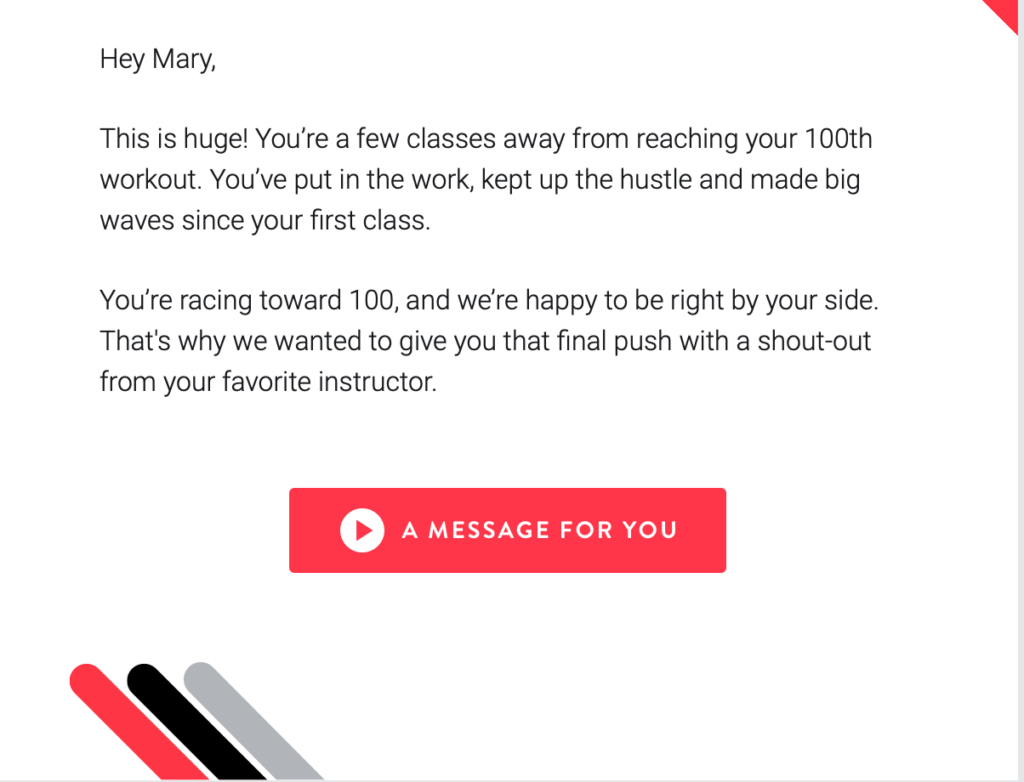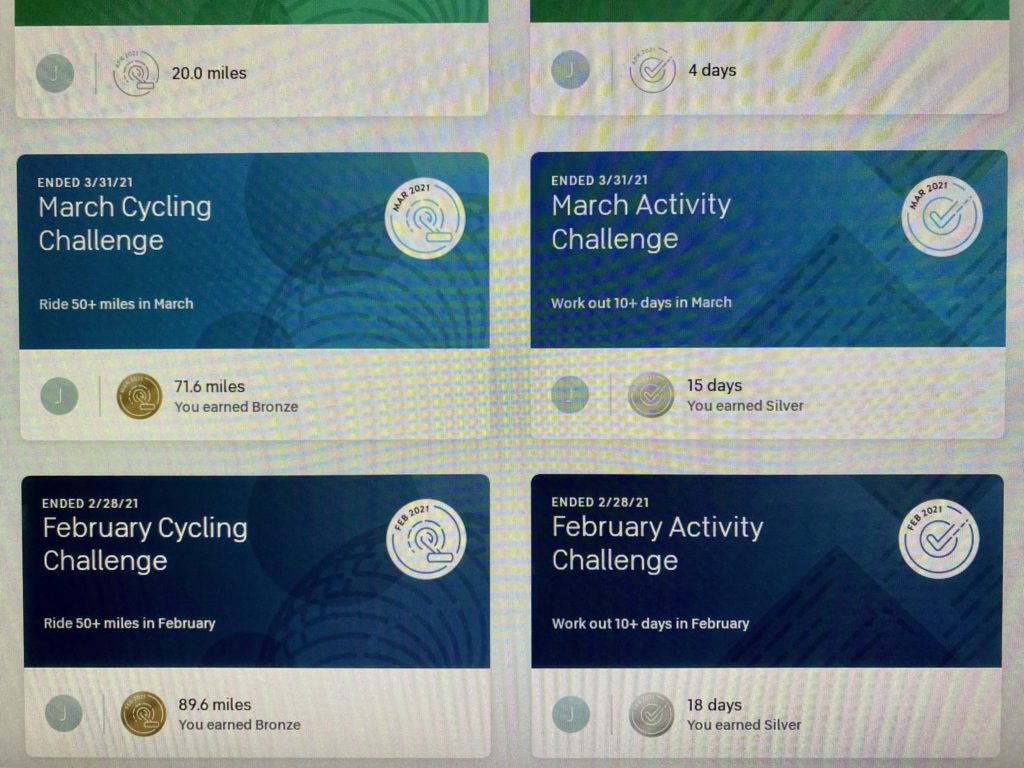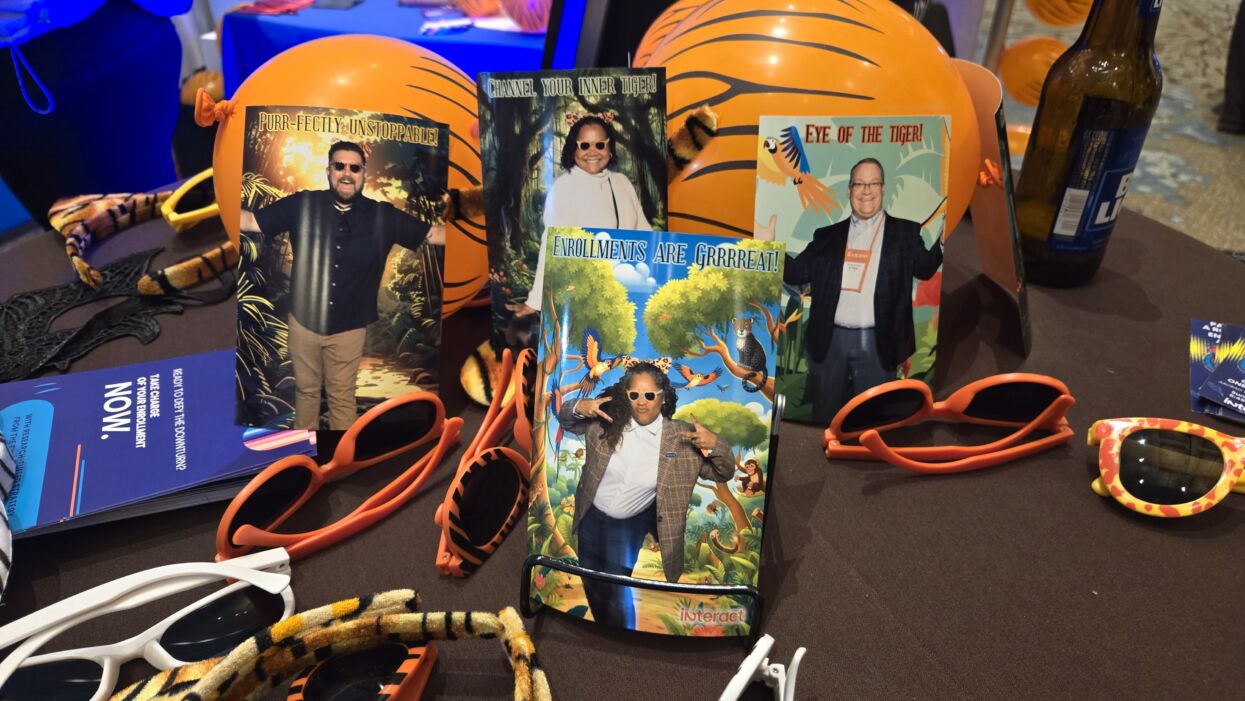What my at-home cycling experience has taught me that could help community colleges avoid the summer slump and stop-out syndrome.
By Mary De Luca, VP, Interact Communications
Like many working from home, feeling cooped up during COVID—Zooming by day and zoning out long before night—my husband and I convinced ourselves an at-home exercise routine might get us out of our winter doldrums. So, we scrapped our usual Christmas gift exchange for a New Year’s investment in a Peloton Bike and all the requisite accessories—the mat, shoes, and hand weights.
Has our investment paid off? I think so. I’m on a 16-week cycling streak. (Seriously, I can’t recall the last time I tried something new and stuck with it so long.) I feel stronger physically and emotionally. This got me thinking about the community college students we serve and ways we might better motivate them to avoid falling into the dreaded stop-out pit—an all-too-likely scenario between spring and fall.
Let’s start with CONVENIENCE.
Live and on-demand classes we can take from the comfort of our home—that’s what drew us to purchase our bike. Such convenience really works for me, my husband, and our 22-year-old daughter—two generations sharing the equipment whenever it suits us and our schedules. Plus, with the app, we can take classes off the bike, too. I enjoy stretching and strength training classes with instructors on the TV in my family room, while Mark or Marisa are cycling downstairs.
But the convenience also extends to customization. I choose the type of class I want to take, the level of intensity, the instructor, the music. I can even listen to my curated Peloton playlist when taking an outdoor walk. I can always find a class that fits my day and my mood, which is remarkably elevated when I’m done. I can bookmark favorite classes, making it easy it to retake them. And I get emails with my “personalized picks” suggesting classes based on what I’ve liked already and what I might like to try based on my preferences.
The CONVENIENCE lesson takeaway for community colleges?

You leveraged online and hybrid learning during the pandemic, and although it hasn’t always been loved by all, as Interact’s Media Prefs data shows, it is certainly appreciated and needed by busy adults who are juggling coursework with hectic work schedules and family commitments.
So, what can you do to make online options even more convenient? Interview your students to find out more about their learning styles and preferences. Focus groups and online surveys are a good start. What would better entice them to keep going? Can you develop on-demand course modules in shorter sessions that students can take to earn valuable workplace credentials that have merit on their own and ultimately stack up to a certificate or degree? Can you develop customizable options that make the courses appealing for different student persona groups? How about dedicated course sections for working moms or shift workers?
Think outside the classroom and the 15-week semester. You just might reinvent college!
High-five your COMMUNITY!
With so much isolation during COVID, I really appreciate Peloton’s class atmosphere and upbeat instructors. It’s all about the push—the push on the pedal speed, the resistance, and me!
Sure, some instructors are more inspiring than others. But I haven’t met one yet who hasn’t made me feel good about my progress and performance, despite the fact that I’m always at the bottom of the on-screen leaderboard.
Who cares? I’m here. I show up. And while I typically choose an on-demand class over a live one, I still enjoy the recorded instructor shout-outs to fellow Pelotonians who took the class live. Those shout-outs remind me why I choose to carve 10, 20, 30 minutes or so out of a 24-hour day to join them for this sweat-inducing ride.
Though my instructors may be thousands of miles away and on screen, I feel like they really “see me.” As instructor Tunde Oyeneyin encouraged, while urging us to turn up the resistance, “I’m not doing this TO you. I’m doing this FOR you.”
Recently, one of my favorite instructors emailed me this celebratory video message letting me know how close I am to achieving a new milestone.
But it’s not just the instructors who make me feel “at home” and accountable while working out at home. It’s the million other members of the Peloton community, from all over the world, posting virtual high fives for reaching milestones, like a newcomer’s 10th ride.
Who doesn’t love a high five?
The COMMUNITY-building takeaway for community colleges?

Encourage faculty to send similar messages of encouragement to students via your student portal and email. Interact’s Media Prefs data continues to show how much students value such faculty nods of support. Use your social media to build community and engagement among your students. Invite them to share their stories of both struggle and achievement. Create social media groups among students with like interests so they can build connections. Set up email automations that provide simple, yet heartfelt encouragement to students at key intervals in their journey. They shouldn’t hear from you only when a tuition bill is due or it’s time to register for classes!
CHALLENGE them to greater confidence!
Confidence comes from challenge. That’s something I’ve learned in both my personal and professional life. And my Peloton experience has supported this understanding.
But challenges need not be overwhelming. They can and should be within reach. Each month, for example, I’ve signed up for a variety of challenges Peloton offers members. Making these fitness-focused goals makes me feel even more committed to achieving them. And, despite personal setbacks that made some months’ challenges more difficult, I have always been able to achieve something. That’s because Peloton sets up the challenges to make it possible to achieve a medal regardless of your circumstances: cycle five days for bronze, 10 for silver, and 15 for gold.
So far, I’ve achieved several bronze and silver medals, and one coveted gold for different activity challenges. Go, me! And I can always view my achievements on my workout history screen, which helps motivate me to keep the weekly streaks and milestones going.
Setting smaller, attainable goals and achieving them builds confidence. Charting your progress literally with detailed reports highlighting your personal records solidifies that confidence.
I feel empowered. It’s my journey, no one else’s. I am the one making it happen.
The CONFIDENCE-boosting takeaway for community colleges?

Help your students set bite-sized, achievable goals. Give them the opportunity to make a commitment to those goals, even if it’s simply to share with a faculty member that they intend to return next semester. Expressing their commitment to someone makes it real. Find opportunities to celebrate their progress at each step of their journey. Make these celebrations something visible and tangible, that they can keep in front of them to remind them of why they are working hard and what they have already achieved.
When they fall off track, let them know it’s OK and everyone does. “@%&$ happens!” What matters is having the grit and resilience to “get back on the bike” and ride on.
If we want students to make it to commencement, we can’t wait until their final semester to tell them we’re proud of them. Let’s show them we’re about more than convenience. We’re their community. We’re with them every step of the way, boosting their confidence.



